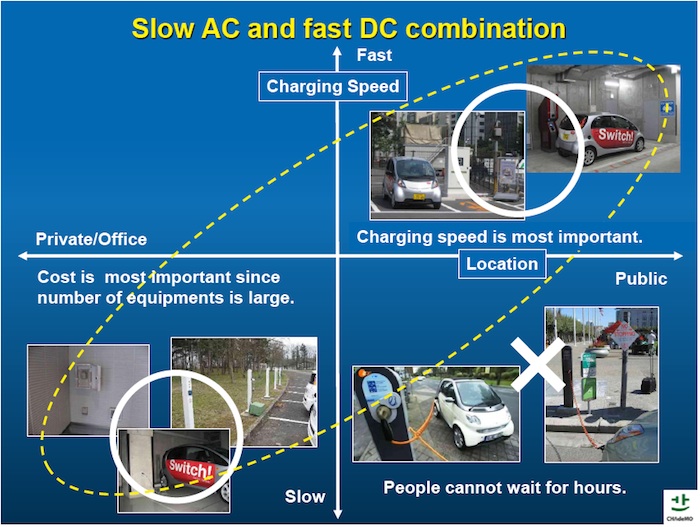Do you know the pain of living on “level 0 charging”? That obtuse question is preventing those who rent from buying plug-in electrified vehicles. Level 1 (AC) charging is a 120 volts connection that’s barely suitable for EV charging, while Level 2 (AC) charging is the typical 240 volt 30 amps (or more) charging connection through a charging station. Either one is simple to procure for a home OWNER, they simply call an electrician who runs some wires to their service panel (assuming there’s sufficient electrical capacity to their home and to their neighborhood), connecting the charging station to power, and the job is done. But, a renter, or a condominium owner, they’re in a whole different universe, stuck with what we might as well call “level 0 charging,” or no charging at all.
Everybody recognizes that charging at home is a base requirement for successfully owning an electric vehicle. When I hear government planners speak about EV charging infrastructure, they repeatedly describe charging infrastructure that starts at home. But what about the people who cannot procure a charging connection at their home?
The advantage electric vehicles have over other fuel systems is that electricity is everywhere. Theoretically we just tap into an electrical outlet, and there’s our fuel. But, the powers-that-be decided things would be more complex than that. It’s like that line – everywhere there’s water, but not a drop to drink.
Renters (and other occupants of multi-unit dwellings) might not even have an assigned parking space. Even when they do, access to electricity from that space might be tricky. Often there’s no electricity in the parking area, or when electricity is present it’s “house power” paid for by the building owner. What’s exceedingly rare is parking, at a multi-unit dwelling, with an electrical outlet whose electricity is charged to the tenant.
That’s the world I am now occupying, due to the vagaries of my life situation. My only vehicle is an electric car with 50ish mile range (see ekarmann.com![]() ), and we’ve just moved into an apartment complex with assigned parking in a carport where I cannot run electricity. The apartment complex was built in the 50’s, when there was no thought anywhere that cars would be fueled on anything but gasoline.
), and we’ve just moved into an apartment complex with assigned parking in a carport where I cannot run electricity. The apartment complex was built in the 50’s, when there was no thought anywhere that cars would be fueled on anything but gasoline.
I’ve gone to a lot of trouble to divorce myself from gasoline, and in this apartment we’re completely divorced from fossil fuels because it’s an all-electric-kitchen. But, fueling my car is difficult because it can’t be done at home.
I’ve learned a lot already in the last three weeks. For example, I’m now experiencing range anxiety when before I had range confidence. The range anxiety myth is sold to us as a way to persuade people away from buying electric cars, when it’s been shown time after time that after a couple weeks of electric car driving everyone develops range confidence.
What I’m finding is that being unable to charge at home leaves me uncertain, every day, about where and when the car can be charged. The uncertainty gnaws away, producing some anxiety.
The car is constantly in a state of not completely charged, putting uncertainty into every trip.
I expect to be writing some more observations from the land of “level 0 charging” over the next few months. We’re three weeks into a 12 month lease.
- Highway design could decrease death and injury risk, if “we” chose smarter designs - March 28, 2015
- GM really did trademark “range anxiety”, only later to abandon that mark - March 25, 2015
- US Government releases new regulations on hydraulic fracturing, that some call “toothless” - March 20, 2015
- Tesla Motors magic pill to solve range anxiety doesn’t quite instill range confidence - March 19, 2015
- Update on Galena IL oil train – 21 cars involved, which were the supposedly safer CP1232 design - March 7, 2015
- Another oil bomb train – why are they shipping crude oil by train? – Symptoms of fossil fuel addiction - March 6, 2015
- Chevron relinquishes fracking in Romania, as part of broader pull-out from Eastern European fracking operations - February 22, 2015
- Answer anti- electric car articles with truth and pride – truth outshines all distortions - February 19, 2015
- Apple taking big risk on developing a car? Please, Apple, don’t go there! - February 16, 2015
- Toyota, Nissan, Honda working on Japanese fuel cell infrastructure for Japanese government - February 12, 2015














